With such a large base of diabetic patients in China, how to develop a force in the blood glucose meter market? How should the product be upgraded and iterated?
Editor’s note: This article comes from the WeChat public account “ Mean value investment ” (ID: CNISVI) , Author ISVI.
Report summary
1. The number of global diabetic patients is large, and the number of diabetic patients in China ranks first in the world
According to the data released by IDF (International Diabetes Federation) in 2019, there are approximately 463 million people with diabetes worldwide, of which 116 million are Chinese patients. The number of diabetes patients in the world ranks first in the world, much higher than India, the world’s second. 72 million people with diabetes.
2. The penetration rate of blood glucose meters in China is far lower than that in developed countries, and the market for blood glucose meters is huge.
At present, the overall market of blood glucose monitoring systems in China is about 5 billion yuan (RMB), but the penetration rate is only 20%. Compared with the 90% penetration rate in developed countries, there is still huge room for growth, even with the global average penetration rate. Compared with the level of 60%, there is still great development potential.
3. Domestic brands of blood glucose meters have increased their market share, and the localization trend has grown significantly.
Foreign brands such as Johnson & Johnson and Roche have just settled in China, with a market share of nearly 90%. In 2016, Johnson & Johnson, Roche and Abbott accounted for more than 60% of the market. Kang’s four domestic brands occupy 30% of the market share and grow year by year.
4, 5G, AI and other technologies are increasingly mature, which will help the intelligent development of blood glucose meters
The increasing maturity of 5G and AI technologies can better play its value in collecting measurement data. It can monitor, transmit patient data in real time through remote, and provide accurate and reliable analysis results in a timely manner.
I. Overview of the blood glucose meter industry
1. Development process and working principle of blood glucose meter
The blood glucose meter, also known as a blood glucose meter, is an electronic device that measures blood glucose levels. In 1968, Tom Clemens invented the first blood glucose meter. After decades of development, the blood glucose tester technology has gone through five stages of development, from the early light reflection technology to the current electrochemical Technology, most of the blood glucose meters currently on the market are the fourth and fifth generation blood glucose meters using electrochemical technology.
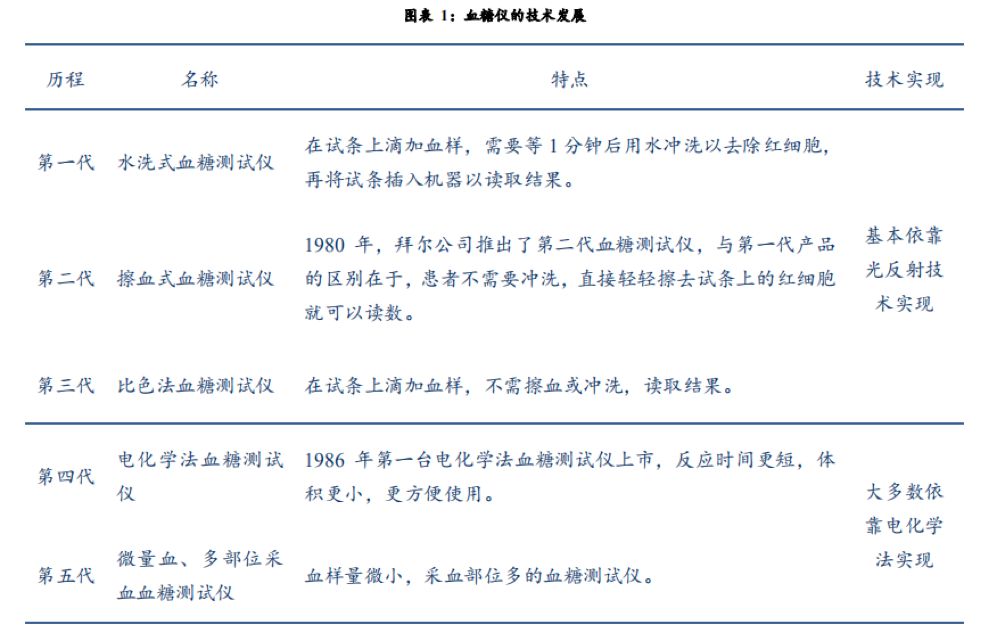
Data source: “Summary of the progress of blood glucose meter detection technology”, collation of public information


Current blood glucose meter products
At present, the mainstream blood glucose meter products use electrochemical technology, which uses the principle of detecting the current signal generated during the reaction to reflect the blood glucose level;
The fourth-generation blood glucose meter uses glucose oxidase as the oxidase, which is characterized by high specificity and mature technology. However, because the reaction process requires oxygen to participate, the measurement results are easily affected by the blood oxygen content and the results appear. Deviation; the fifth-generation blood glucose meter uses improved glucose dehydrogenase technology and is no longer interfered by other sugars in the blood. Manufacturers with fifth-generation blood glucose meter technology have certain technical advantages, especially in the hospital-side market competition.
2. Policy support will promote the development of localization of medical devices
(1) According to the requirements of China’s Medium and Long-Term Plan for the Prevention and Treatment of Chronic Diseases (2017-2025), the number of people with diabetes management in China will reach 40 million by 2025, and the domestic demand for blood glucose instruments will reach about 40 million.
(2) The medical device industry continues to grow with the growing demand for human health. It is hailed as a rising industry and is a leader in the competition among developed countries around the world.area. According to the “China Medical Device Industry Development Report” jointly issued by the China Drug Administration and Research Institute, in 2017, the market size of the Chinese medical device industry reached 523.3 billion yuan (RMB), which has become the world’s second largest medical device market.
(3) The rapid development of China’s medical device industry is inseparable from policy support. In 2012, China issued the “Twelfth Five-Year Plan” for the medical device technology industry to focus on the development of a number of domestic high-end medical devices to form an import substitution. Since then, China has begun the domesticization of medical devices. The “Outline of National Medical Service System Planning (2015-2020)” promulgated by the State Council in 2015 clearly stated that it is necessary to reduce medical costs and gradually increase the level of domestic medical equipment deployment.
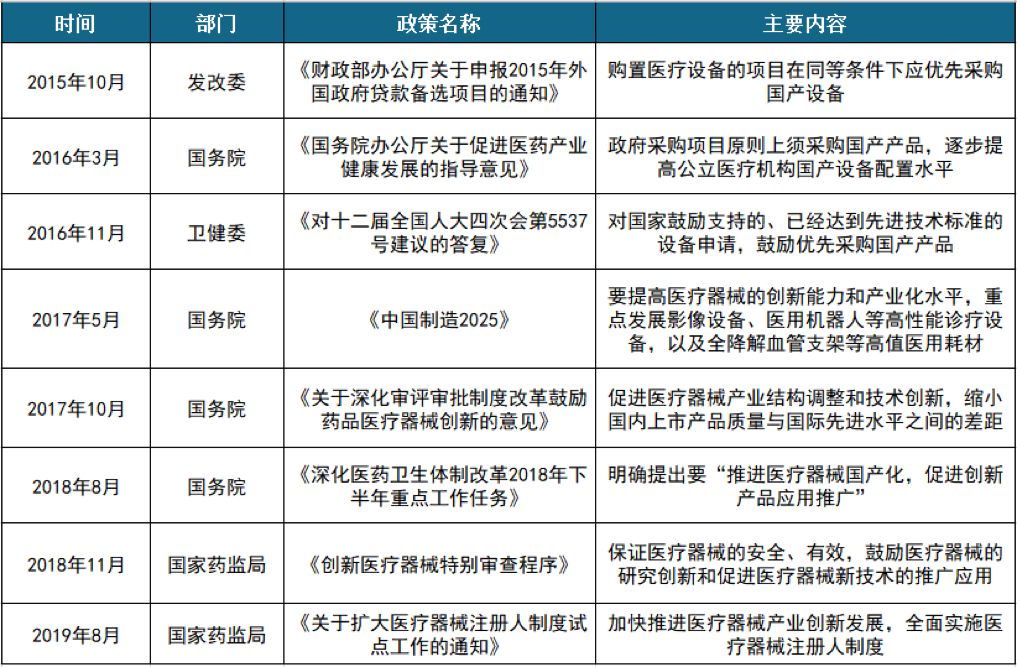
Policy to encourage innovative medical devices
Summary: In the past 60 years, the blood glucose meter has undergone a change from scratch, from the first generation of optical reflection technology to the fifth generation of electrochemical reaction technology. The awareness of health management has further deepened, and the proportion of medical consumption will continue to increase; the introduction of national and local policies will also help attract technology, talents and resources to gather in the country, and domestic brands will also be diversified, helping medical care Development of domestic equipment.
Second, industry analysis
1. The penetration rate of domestic blood glucose meters is low, and there is still huge market space
According to the data released by IDF in 2017, the number of 20-79-year-old diabetic patients in China, India, and the United States was the highest in 2017, with 114.4 million, 72.9 million, and 30.2 million, respectively. It is estimated that by 2045, the top three countries with the largest number of diabetic patients will be India, China, and the United States, with the number reaching 134.3 million, 119.8 million, and 35.6 million, respectively.
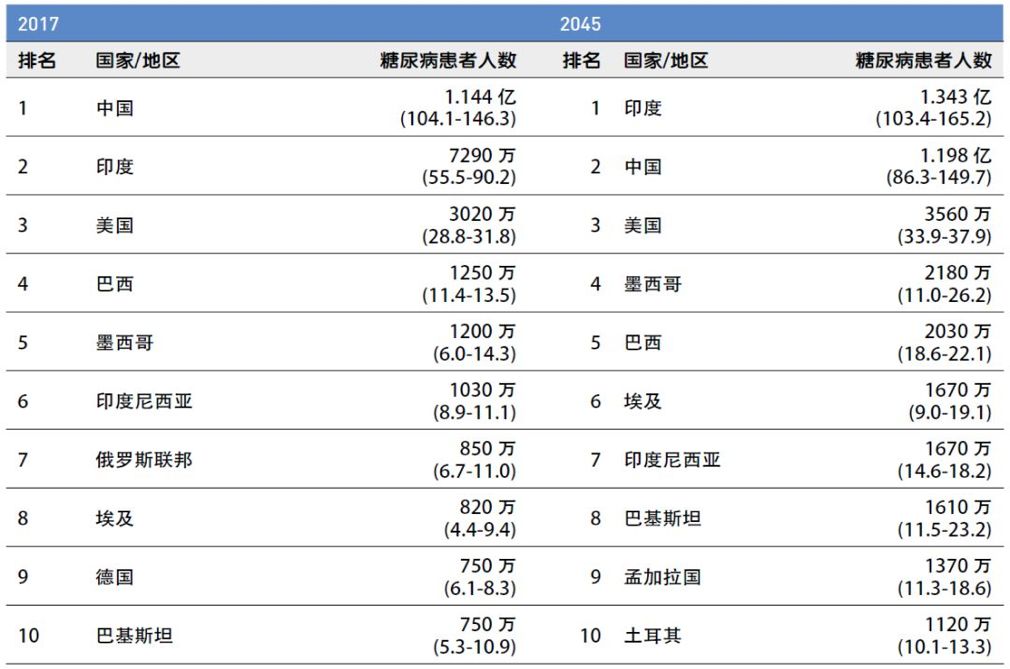
Source: IDF (International Diabetes Federation)
Relevant data shows that the global market capacity of blood glucose monitoring systems reached more than 20 billion U.S. dollars in 2016. The size of China’s blood glucose testing market is only 6 billion yuan (RMB), but the penetration rate is only 20%, compared with 90% in developed countries. There is still huge room for growth in the penetration rate. Even compared with the global average penetration rate of 60%, there is still a great potential for development.
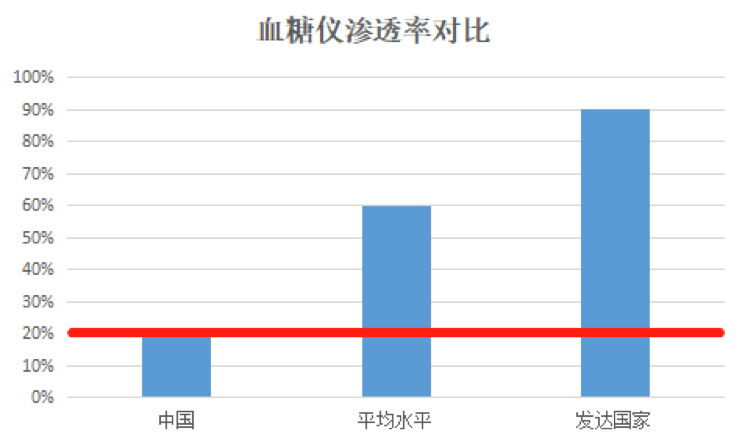
With the development of China’s economy, the increase of per capita income and the increase of patients’ awareness of blood glucose control and prevention of complications, there is still room for improvement in the blood glucose meter market in China in the future.
According to IDF statistics, the market size of China is growing at 15% -20% per year. By 2021, the market size of China’s blood glucose meter will be conservatively predicted to reach 12 billion yuan (RMB), and the market size is optimistically predicted to reach 13.9 billion yuan (RMB ), Which has not yet calculated the market size of consumables such as test paper.
2. Foreign brands still occupy a large market share, and domestic brands are expected to break the market structure
(1) From the perspective of overall market share: foreign brands are still the protagonists in the domestic market
In 1995, China did not have the ability to produce blood glucose meters independently. Foreign brands Johnson & Johnson first entered the Chinese market, followed by Roche. After about 20 years of market development, foreign brands have occupied more than two-thirds of the Chinese blood glucose meter market. In the urban market, especially in the first-tier cities, foreign brands of blood glucose meters have unparalleled advantages. In terms of market share, Johnson & Johnson accounts for approximately 35%, Roche accounts for approximately 20%, and Abbott accounts for approximately 8%.
From the perspective of the competition pattern of the blood glucose meter market, domestic leading companies account for 20% of Sannuo Biotech and Beijing Yicheng accounts for 15%. Compared with foreign companies, there is still a gap.

(2) From the status of sales: domestic brands are mainly OTC, foreign brands are mainly hospitals
Domestic blood glucose meter sales channels are divided into hospitals and OTC channels. Hospital channels are currently dominated by foreign brands, while OTC channels are dominated by domestic products.
In the 1990s, domestic countries did not have the ability to independently produce blood glucose meters. Foreign brands Johnson & Johnson and Roche entered the Chinese market. The early domestic academic market marketing and knowledge popularization were also completed by these imported brand manufacturers. The domestic city hospitals represented by the top three hospitals have become the main propaganda positions for foreign investment, which has brought the absolute advantage of the foreign-branded hospital market and currently holds about 60% of the domestic market share.
With the rise of the domestic OTC market, the maturity of domestic brand technology and price advantages, domestic brands represented by Sannuo have risen in the OTC market, occupying 33% of the domestic market, of which Sannuo accounts for approximately 21%, About 4%;
At present, other companies such as Yuyue are actively entering, and it is expected that competition will become fiercer thereafter. At present, the U.S. OTC market occupies more than 85% of the market share, and about 50% in China. With the advancement of telemedicine and Internet medical treatment, it is expected that the center of gravity of personal detector equipment sales terminals will gradually move to the retail end, and the growth potential of the OTC market will be Gradually released thereafter.
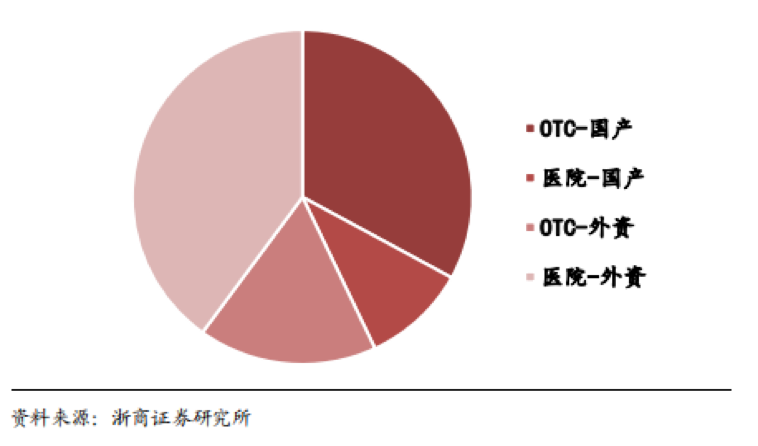
The pattern of domestic and imported blood glucose meters
Summary: From the analysis of the overall market share, foreign brands still occupy most of the domestic market. Because foreign brands have occupied the domestic hospital market for many years, brand influence and technology are difficult to surpass in a short time.
But in recent years, the state and local governments have promulgated relevant policies to support the localization of the medical industry, attracting resources such as talent, technology, and funds. The technology gap between domestic and foreign blood glucose meter production and development has narrowed, and technical barriers to original imported brands have been reduced. Gradually it was broken, the growth rate of foreign brands ‘income tended to slow down, and domestic brands’ price advantages gradually manifested under the premise of homogeneity.
The performance of blood glucose meters produced by domestic companies can meet the needs of most patients and the price is low. Domestic brands may not be able to produce more companies such as Sannuo and Yicheng in the home blood glucose meter and retail market.
3. Industry characteristics:
By comparing the blood glucose detection of the POCT blood glucose meter with the automatic biochemical meter, the POCT blood glucose meter has the prominent features of small size, convenient carrying, simple operation, low blood consumption, and significantly shortened test time:
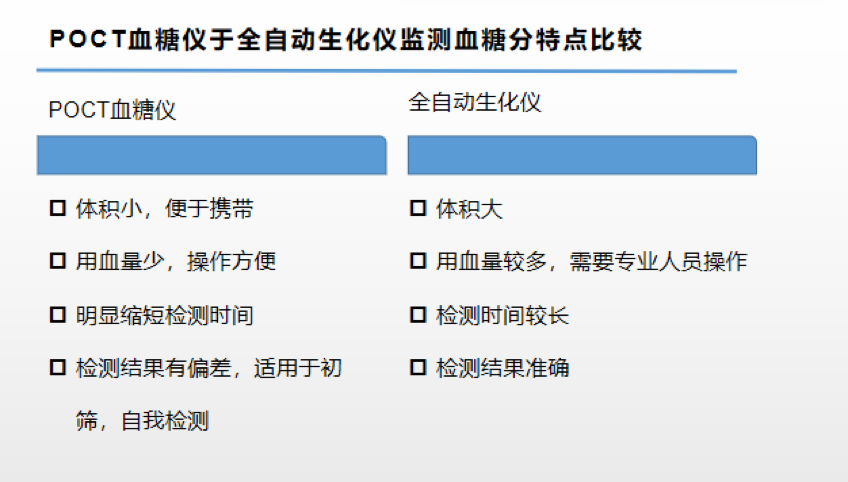
The blood glucose meter is mainly composed of two parts, a testing instrument and a test strip. Its principle and technical application are not complicated. Although there are certain technical barriers, the barrier to entry for the industry is not relatively high.
Nevertheless, it does not mean that as long as you have mastered the technology, you can freely occupy a certain market share in this industry. Even if you master the technical principles, if the products produced are all defective products, it can only be Watching it become a pile of waste, let alone counting on making money.
Glucose meters and test strips look like two concepts, but they are inseparable. In fact, using Sano ’s machine can only use Sano ’s test strips, which is highly exclusive. The key to the large-scale production of test strips is how to ensure the consistency of the product quality of the test strips. Behind this requires a mature, stable production process to support it.
Domestic brands need to form their own barriers in the industrial chain, which is also the key to breaking the long-term monopoly of foreign brands in the domestic market.
III. Analysis of Large Companies with Domestic Market Share
At present, the competitiveness of domestic blood glucose meters is still in the leading position of foreign brands. Sannuo, Yicheng, Yuyue and other domestic brands are close behind, and the remaining domestic brands have a small market share:

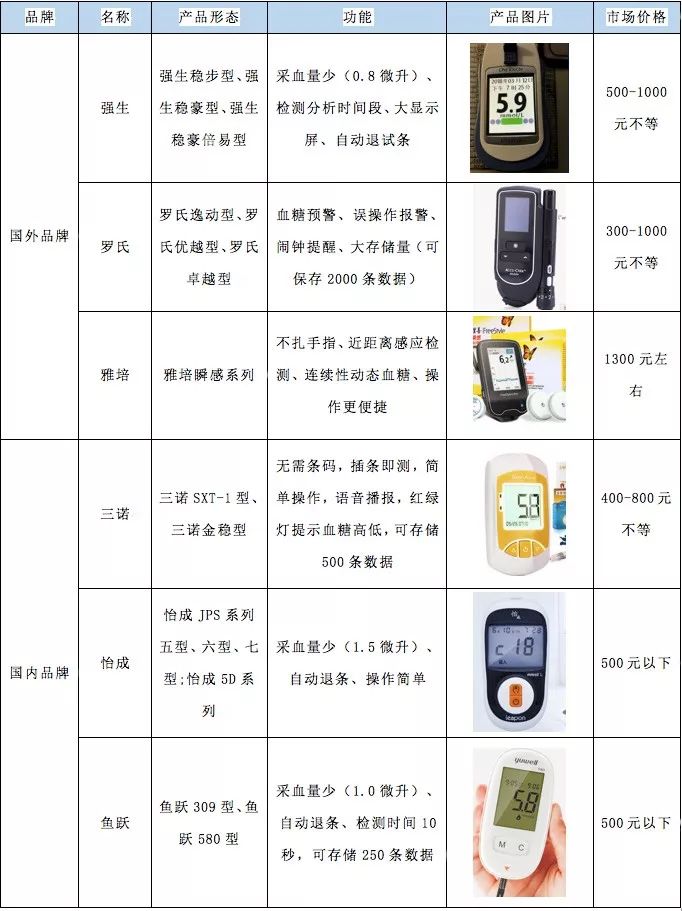
From the comprehensive analysis of the above table, the leading factors of the current market share of foreign brands are as follows: 1. Less blood collection; 2. Short detection time; 3. Big data storage; 4. Automatic reminder function. Compared with foreign brands, domestic brands are slightly less functional, but the detection accuracy is not much different, and the price is close to the people. This is also the key to the domestic brand blood glucose meter’s market share in the home end.
We can find that most of the mainstream blood glucose meters on the market currently use minimally invasive detection technology. Before testing, they need to prick their fingers for blood collection. Here, Abbott ’s series of instantaneous detection products can be said to be the closest to noninvasive blood glucose on the market. The brand that has been commercialized on a large scale, although the price is the highest among all the above brands, it can be detected without proximity with a finger, which can make us imagine the future of non-invasive detection.
Four, 5G commercialization landing
The increasing maturity of AI technology will help non-invasive blood glucose monitoring. In the future, it will gradually occupy a certain market share and become the next ecological investment hot spot for blood glucose detection.
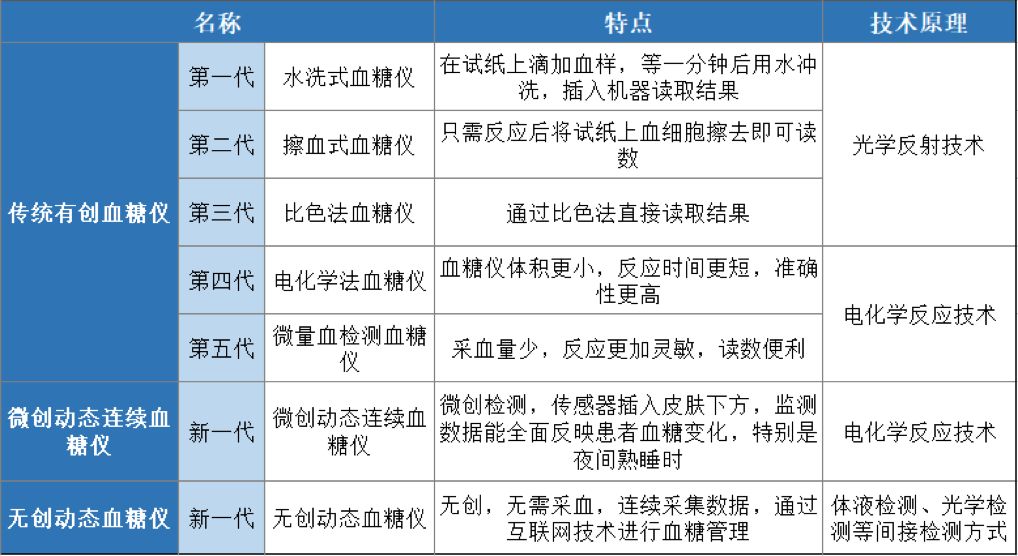
Update table for blood glucose meter replacement
So far, the blood glucose meter has undergone five stages of development in technology. The first three generations have basically used the light reflection method to measure blood glucose concentration. The fourth and fifth generations rely mainly on electrochemical methods. At present, domestic mainstream blood glucose meters use electrochemical methods.
Compared with the fourth generation, the fifth and fourth generations have made some improvements in details such as micro blood collection and multi-site blood collection. It is true that there is a tendency for homogenization of blood glucose meters in the current market, and there is not much difference in basic functions, but how to measure more finely and make it easier for patients to use has always been the goal pursued by all companies. Blood glucose monitoring and non-invasive blood glucose monitoring are the three main directions of the current development of blood glucose meters;
As can be seen from the history of the development of blood glucose meters in the table above, non-invasive blood glucose detection uses indirect detection methods such as body fluid detection and optical detection. This has transmitted blood glucose measurement data, large-capacity data storage, long-distance detection and Intelligent analysis of test results raises higher requirements.
With the coverage of 5G base stations and the commercial application of 5G, we are about to enter an era of Internet of Everything. Blood glucose detection is no exception. The advantages of fast data transmission speed, low latency, and large network capacity are non-invasive. Blood glucose provides technical support; in addition, AI technology’s sensing ability, data acquisition, judgment analysis, and autonomous learning ability also give the application of non-invasive blood glucoseOffers unlimited possibilities.
Non-invasive blood glucose meters will have the opportunity to occupy a larger share of the blood glucose meter market and be favored by capital. It is expected to become a mainstream product in the market in the future.
V. Blood glucose meter product form and development trend
The technical iteration of blood glucose meters and the process of product morphology are mainly from traditional invasive blood glucose to the minimally invasive blood glucose that is more common in the market today. In the future, there is a great opportunity to replace non-invasive blood glucose in existing product forms. Changes in size, convenience of detection, and technological principles are more changes in the entire industry chain, the entire blood glucose ecosystem, and the applicable population and application scenarios. Below is a list of several mainstream blood glucose products in the market for analysis.
1. Mobile blood glucose meter: “Hardware + Services” to create a closed loop for diabetes management
At present, the domestic mobile blood glucose meter should belong to the “sugar nurse” as a representative. It monitors the patient’s diabetes data through the blood glucose meter as a monitoring terminal, and then uploads the patient’s data to the company’s cloud through the mobile APP, and finally through the medical institution Of doctors provide medical services to patients to create a vertical closed loop of diabetes management from monitoring to treatment to management.
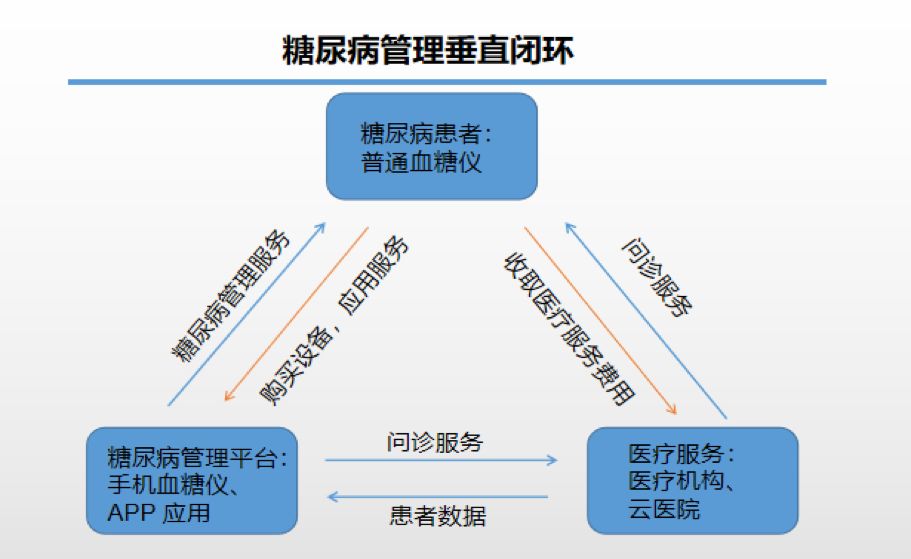
It is understood that in September 2013, the sugar nurse received a 3 million angel round investment from Innovation Workshop and Sino Bio, and received CFDA medical certification in 2014. The market price is only 199 yuan.
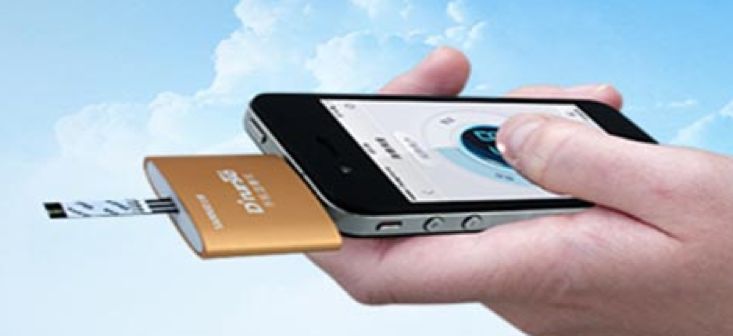
2, dynamic glucose monitoring (CGM)
Continuous Glucose Monitoring (CGM) is mainly used for dynamic blood glucose monitoring. The CGM product uses a new type of biological monitoring technology. It uses a sensor that penetrates into the skin to form an electrical signal when the patient’s interstitial fluid and glucose in the body undergo an oxidation reaction. The electrical signal is then converted into a blood glucose reading and a blood glucose reading. Transmits to the wireless receiver through the transmitter.
The transmitter and receiver are durable devices and the sensors are disposable devices. To ensure measurement accuracy, current CGM products cannot be used independently, and finger blood reading corrections are required twice a day. CGM applications can alert patients to hypoglycemia events during the process of intensifying blood glucose control, thereby reducing the incidence of hypoglycemia events.
The mainstream brands in the market are Abbott’s instantaneous-scanning blood glucose meter. Its products have been sold in China in 2017, as well as Mickey and Kellett.

Partial minimally invasive system detector
3. Non-invasive blood glucose monitoring
Non-invasive blood glucose monitoring technology has the advantages of no pain, no infection, simple measurement, and fast measurement speed. It can effectively meet the needs of people with diabetes to monitor blood glucose concentration in real time and frequently.
According to the different monitoring objects, non-invasive blood glucose monitoring technology can be divided into near-infrared spectroscopy, microwave detection, optical rotation method, energy metabolism conservation method, etc. These technologies are used to measure human blood glucose concentration through indirect methods. Complex conversion formulas to test the sugar concentration in the blood have a certain delay.
We note that non-invasive blood glucose monitoring, as a new generation of blood glucose monitoring technology, will have a disruptive effect on traditional blood glucose meter manufacturers once it is commercialized. Non-invasive blood glucose monitoring can measure the blood glucose concentration of patients without test strips.
In the future, breakthroughs will be made in non-invasive blood glucose monitoring technology, which can achieve mass production and popularity, which will have a strong impact on the traditional blood glucose meter industry chain.
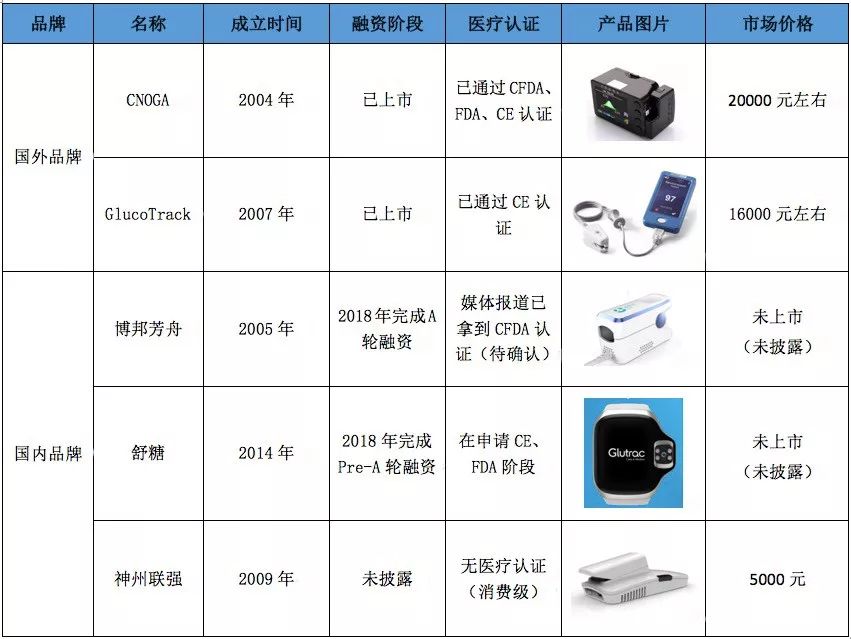
Partial non-invasive system detector
At present, there are dozens of brands of non-invasive blood glucose meters in the market. Some companies like CygnusInc in the United States, GlucoTrack in Israel (“Sugar Whisper” in China) and other companies can obtain CE certification. There are the followingPoint:
(1) Inaccurate detection data
The non-invasive blood glucose test is obviously non-invasive and does not collect blood, which means that this method cannot measure blood glucose by directly reacting with blood to produce blood sugar. All methods use indirect methods to calculate blood sugar content. The above process is bound to affect The accuracy of blood glucose testing has an impact.
(2) High price
Currently, there are very few non-invasive blood glucose testers that have passed CE certification, not to mention FDA and CFDA certifications, and more CE certifications are traditional powers in the field such as Israel and the United States, forming a monopoly in the market , Prices have been high.
(3) Technically difficult
Non-invasive blood glucose cannot be measured by a direct chemical reaction with blood. All blood glucose levels are calculated by indirect methods such as optical detection. Therefore, the accuracy and stability of these products has limited their development, and it is impossible to obtain high-precision non-invasive blood glucose testing products that meet the clinical diagnostic requirements.
Six, the outlook of blood glucose meter
1. At present, the number of diabetic patients in China is large, and the penetration rate is low. The market for blood glucose meters can be expected in the future.
As the country with the largest number of diabetic patients in the world, the penetration rate of blood glucose monitoring systems is less than 20%. With economic growth, increased income, and increased consumption levels, people pay more attention to health and quality of life. A blood glucose meter is no longer out of reach. In addition to the daily blood glucose data monitoring and management, plus the service management derived from blood glucose, the market space is very optimistic.
2. Localization of medical devices, domestic brands are expected to gradually replace or occupy more market share
In recent years, the country has successively introduced a number of policies related to medical devices. These policies include prioritizing the purchase of domestic medical devices, promoting the adjustment of the medical device industrial structure and technological innovation, and implementing the medical device registrant system. These are aimed at encouraging domestic medical devices. Device innovation and vigorous development of domestic medical device brands.
Not to mention the distant future, judging from the current sales situation, domestic blood glucose meter brands at OTC have already occupied most of the market share. It is believed that with policy support, ease of use, timeliness of detection, and data accuracy have been further optimized, the hospital End market share will eventually be replaced by domestic brands.
3. The technology iterative upgrade cycle is accelerated, and more intelligent blood glucose meters will appear in product form.
The blood glucose meter has been in existence for less than 60 years. During this period, the blood glucose meter detection technology ranged from optical reflection technology to electrochemical reaction technology to body fluid detection and optical detection.
After undergoing multiple iterations of technical principle upgrades,Changes, from traditional invasive testing to minimally invasive testing, and then to non-invasive testing that has not yet been used on a large scale, we can find that the technology iterative upgrade is faster. At the same time, the commercial application of 5G and the increasing maturity of AI technology will provide unlimited possibilities for the intelligent upgrade of blood glucose meters.
Summary: Non-invasive blood glucose meters are likely to be a good investment opportunity, focusing on whether there are certain innovations in technology, the progress of medical certification application and the time point for obtaining the certificate. The core team ’s awareness of the medical market and product production Control, real-time follow-up of policies and core factors such as analysis and detection accuracy.
The above is the content of the “Glucose Meter Industry Analysis Report: 116 million people with diabetes in China, ranking first in the world” published by Yuan Zhen Value Investment
Disclaimer
The data used in this report are from compliance channels. The analysis logic is based on the professional understanding of Yuanzhen Value Investment, which clearly and accurately reflects the author’s research perspective. This report is issued only to the extent permitted by relevant laws and is for informational purposes only and does not constitute any advertising. In any case, the information or opinions expressed in this report do not constitute investment advice to anyone.
The information in this report comes from publicly available materials. Yuanzheng Value Investment makes every effort to ensure the accuracy, completeness, or reliability of such information without making any guarantee. The information, opinions and speculations contained in this report only reflect the judgment of Yuanzheng Value Investment prior to the date of publication of this report. At different periods, Yuanzheng Value Investment may issue reports that are inconsistent with the information, opinions and speculations contained in this report. Yuanzheng Value Investment does not guarantee that the information contained in this report will be kept up to date. At the same time, Yuanzhen Value Investment may make changes to the information contained in this report without notice, and readers may pay attention to the corresponding updates or amendments.
Acknowledgements: Your best compliment is your repost.
Pictures from piqsels, if in doubt, please contact the original author.






